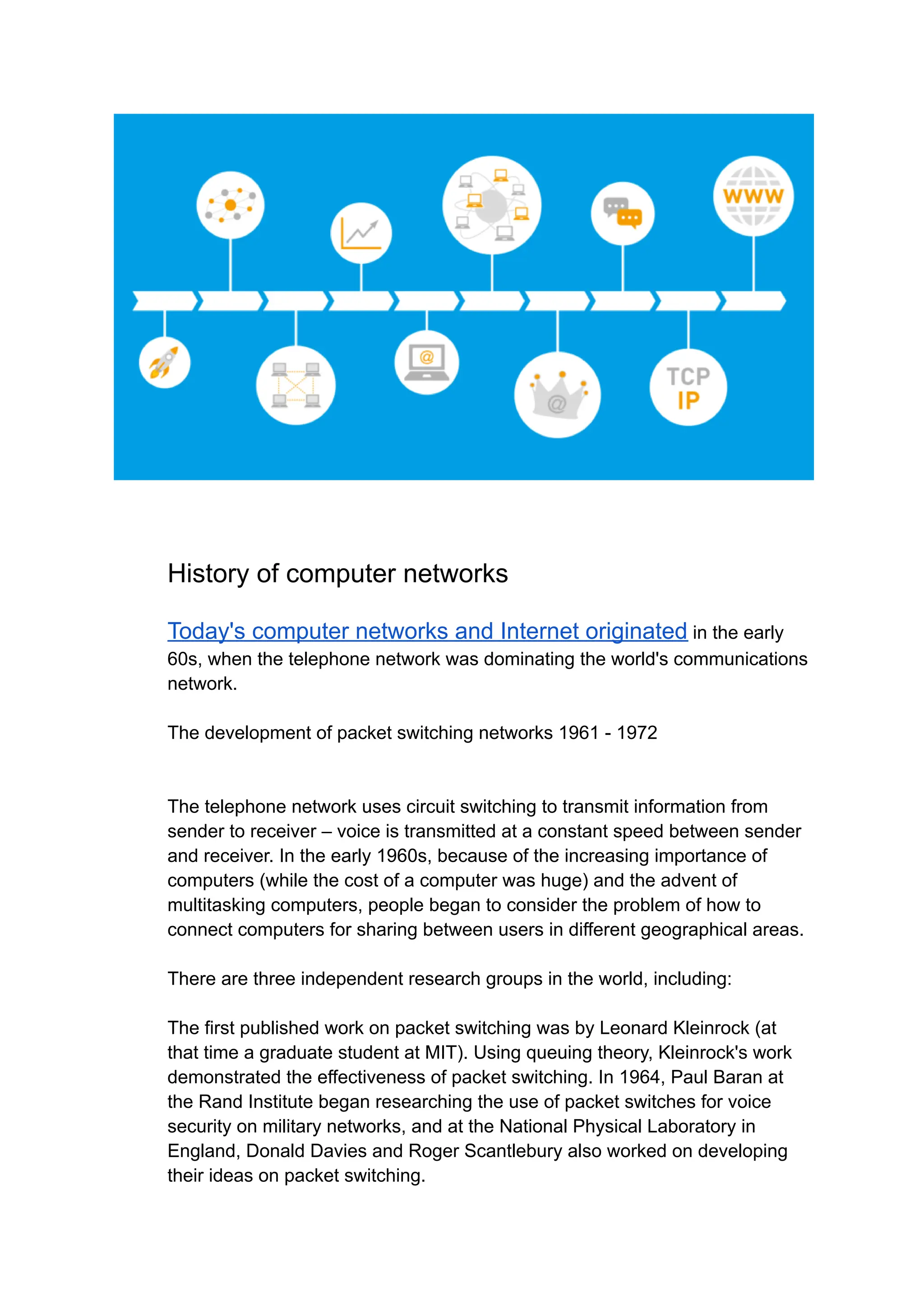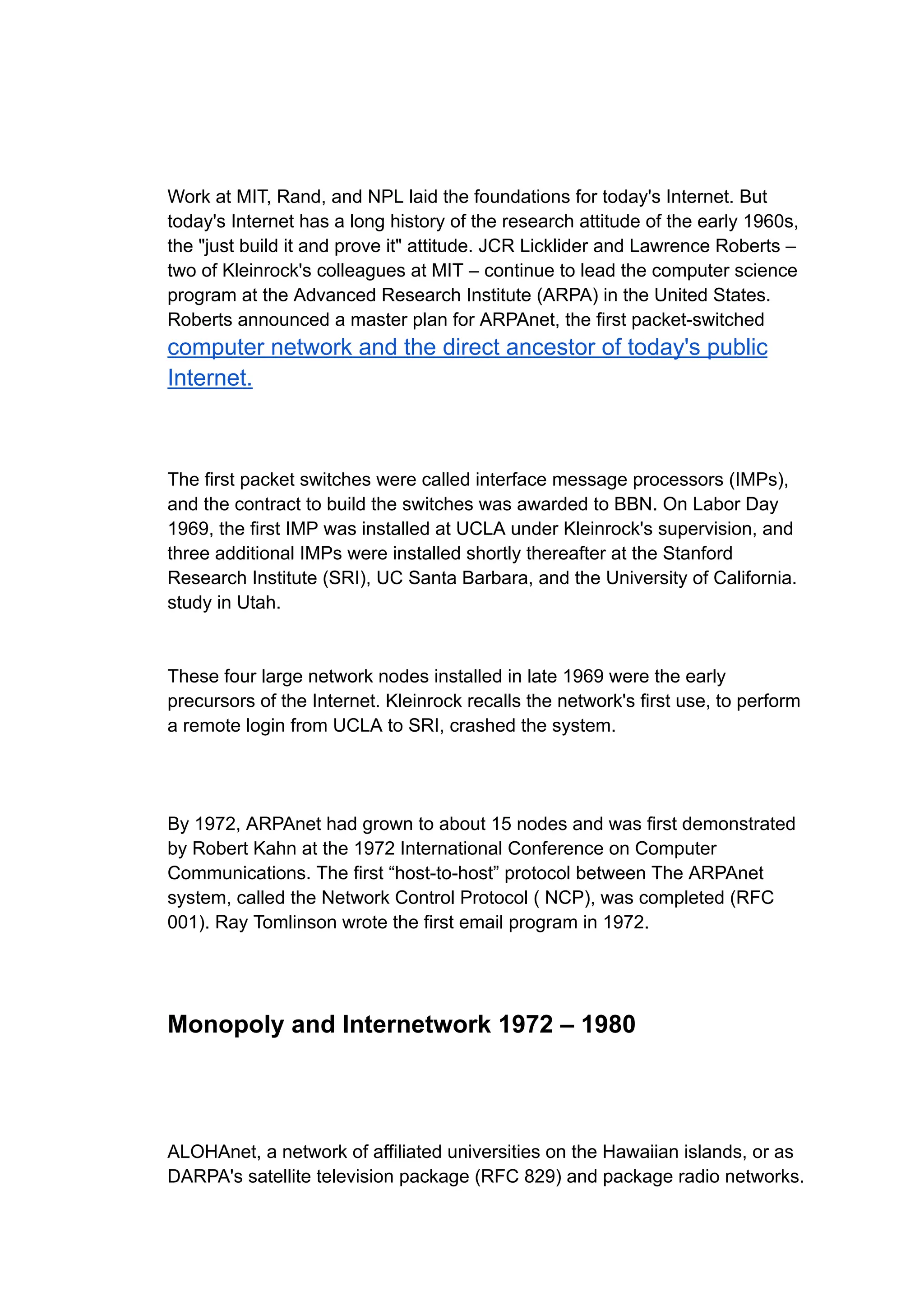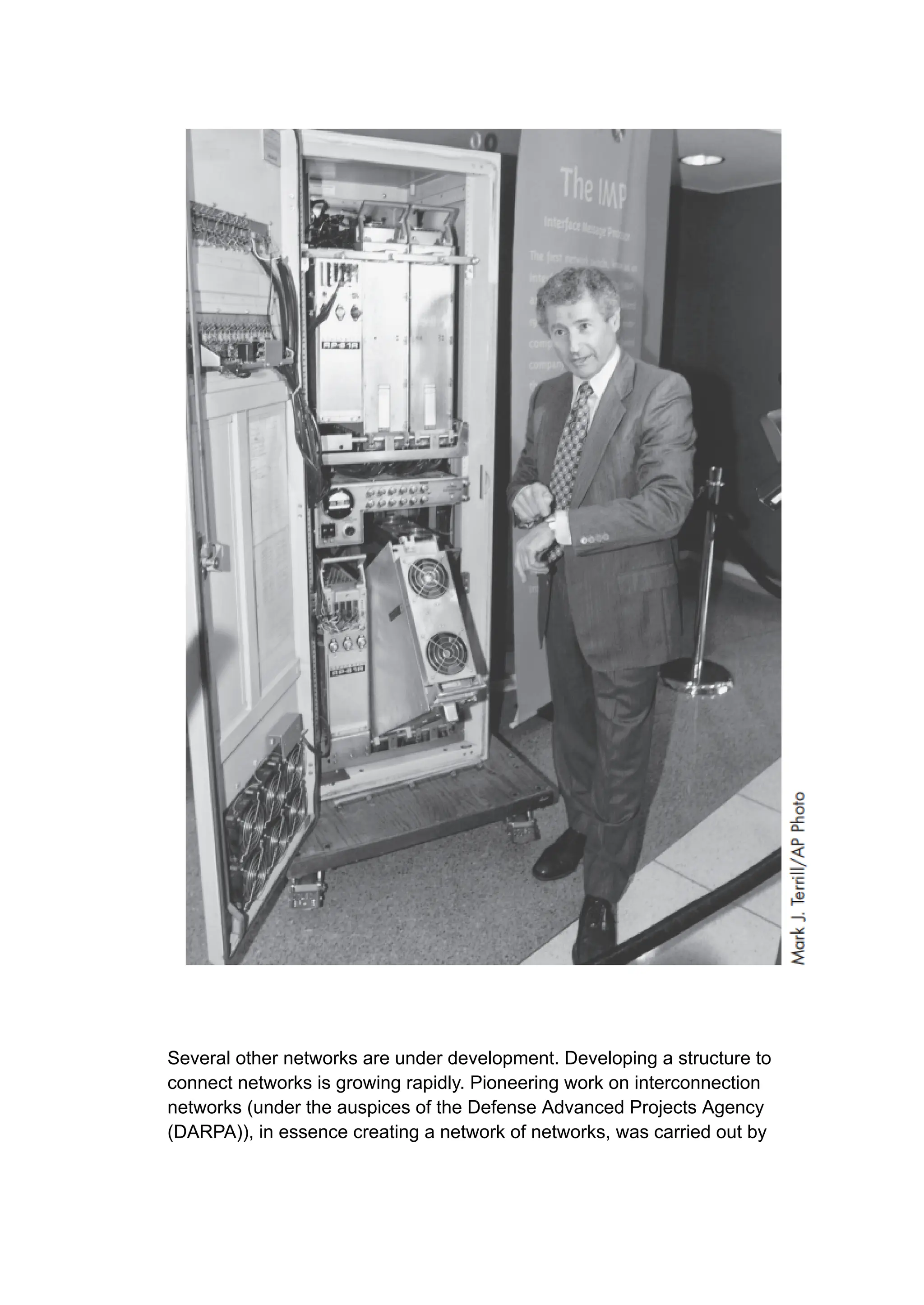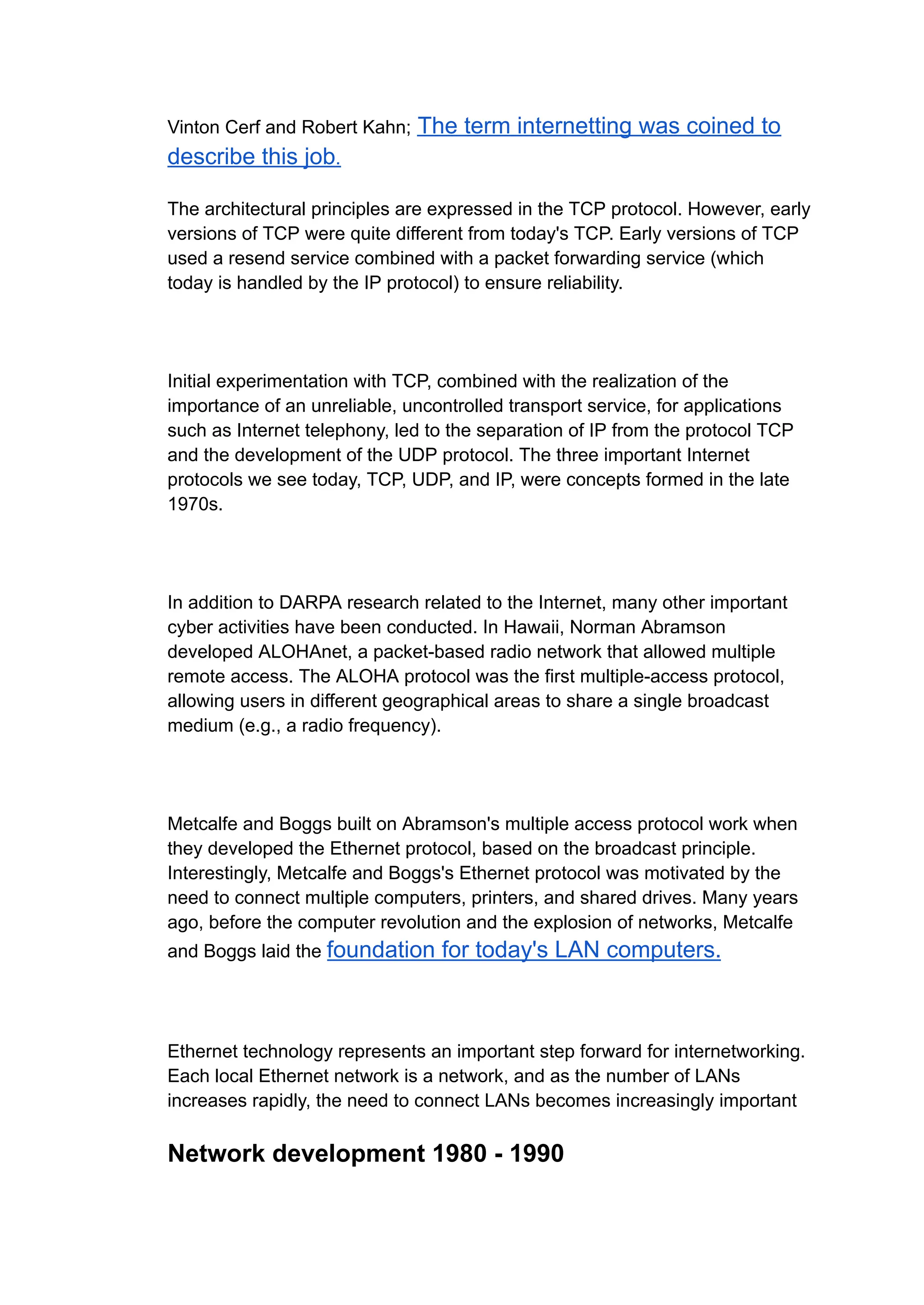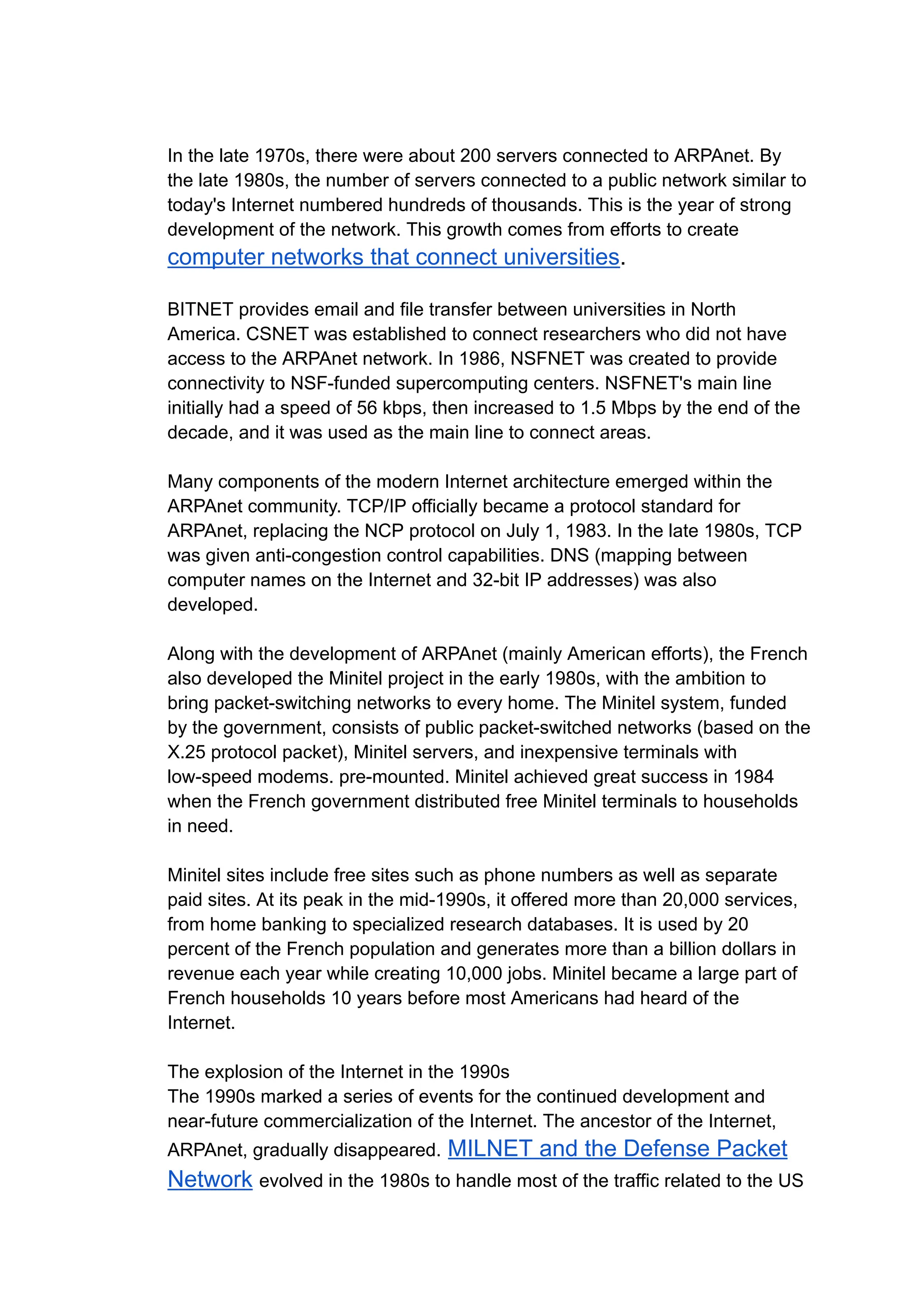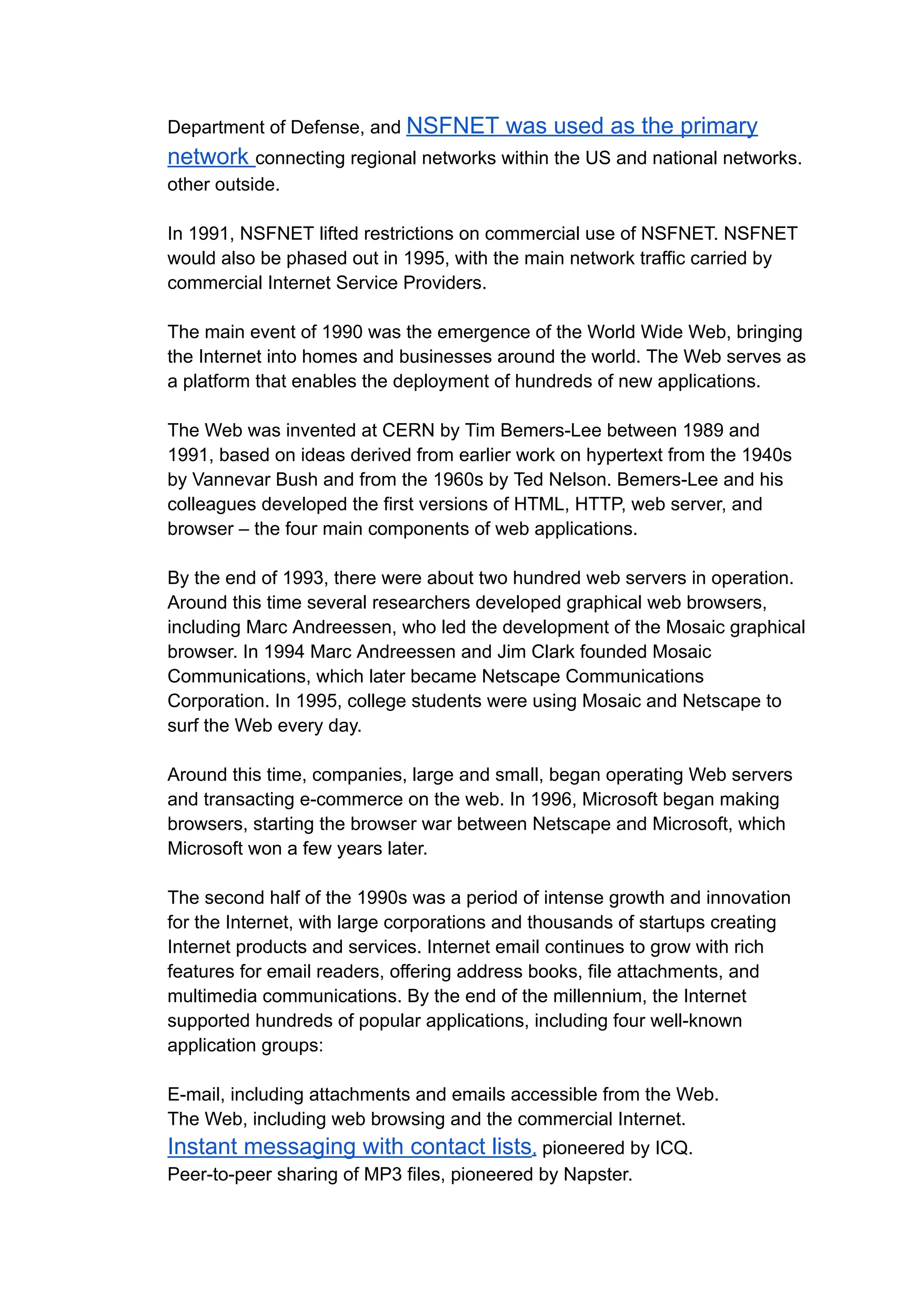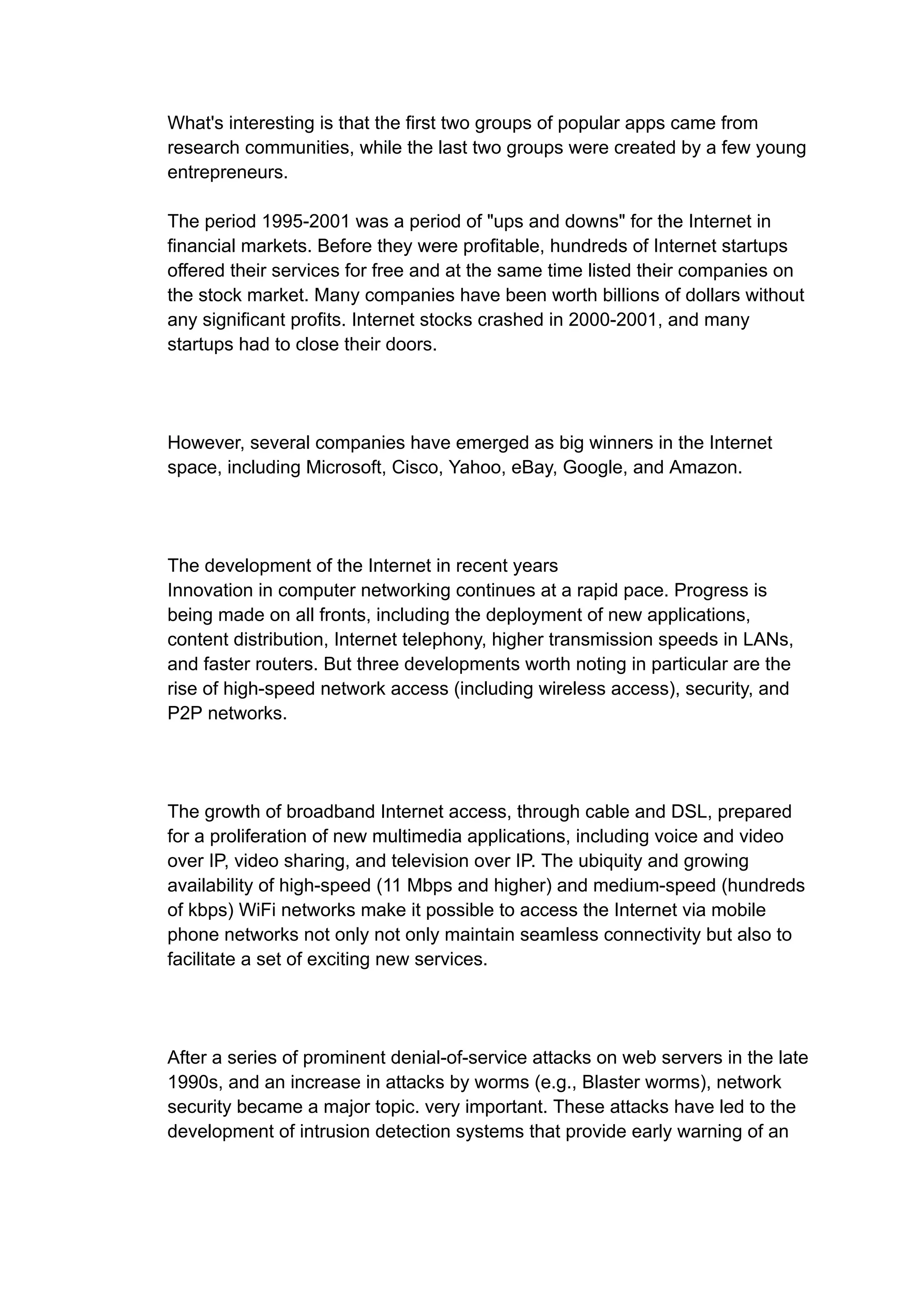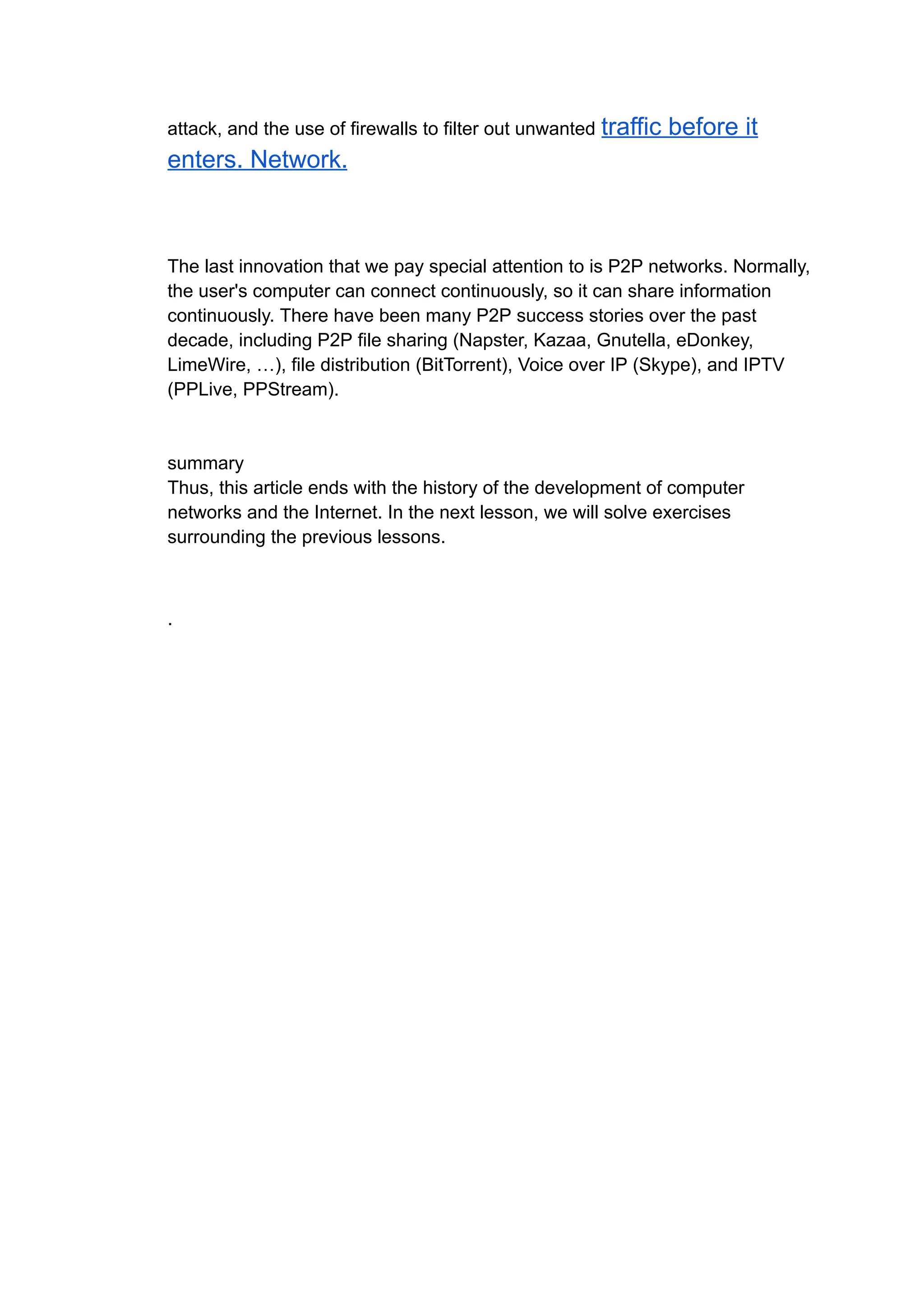This document provides an overview of the history of computer networks and the internet, tracing developments from the 1960s to present. It discusses key innovations such as packet switching, the evolution of protocols like TCP/IP, and significant milestones, including the emergence of the World Wide Web and the commercialization of the internet in the 1990s. The document outlines the growth of internet applications, security concerns, and recent advancements highlighting the continuing innovation in computer networking.
![Lesson 10: History of computer networks and
the Internet
This article is part 12/16 of the series Introduction to Computer
Networks
Part 1: Slide Introduction to Computer Networks (English)
Part 2: Lesson 1: Overview of the Internet and its components
Part 3: Lesson 2: Internet services, APIs, and Internet protocols
Part 4: Lesson 3: Edge Network Components of the Internet
Part 5: [Latest Version] Book Computer Networking: A Top-Down
Approach 8th Edition
Part 12: Lesson 10: History of computer networks and the Internet
Part 6: Lesson 4: Transmission Means of the Internet
Part 7: Lesson 5: Core network components of the Internet
Part 8: Lesson 6: Packet delay, packet loss, and packet switching
network throughput.
Part 9: Lesson 7: Protocol layering and TCP/IP model
In previous articles of the Introduction to Computer Networks Series, an
overview of computer networks and Internet technologies was
presented. In this article, we will take a brief look at the history of the
development of the Internet](https://image.slidesharecdn.com/lesson10historyofcomputernetworksandtheinternet-231214163114-9a700092/75/Lesson-10_-History-of-computer-networks-and-the-Internet-pdf-1-2048.jpg)
